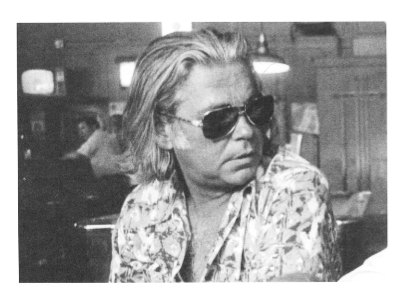It takes a great story to remember where you were when you read it, what the weather was doing, your position on the couch, which friend interrupted with requests for food and beer. For me, it was a twenty-eight-page piece aptly titled “The Greatest Story Ever Told,” by Fielding Dawson. In this coming-of-age tale of a high school boy losing his virginity, then his mind, to a mischievous girl, Fielding’s spiraling sentences drew me into his sensibility and out of mine:
she had been assigned to sit in front of me in study hall on Mondays, Wednesdays, and Fridays.… I was in the next to last seat, back in the rear of the second row from the window which meant I could see out across the front lawn of Kirkwood High, and to Kirkwood Road beyond, and looking to my left, see the lawn descend into a circular hollow in front of Junior High where the fêtes were held, and the most beautiful girls in the world were crowned Queen of the May year after year, and the girls that weren’t bit their lips, wept, embraced their Queen and prayed alongside their crazed parents on Sundays, in church, and every night at home like their parents too; they created a complicated and questionable God of success, and made requests, and asked forgiveness in a kind of dream to Him, in or kneeling beside their beds every night, they thus put themselves to sleep.
I read the story in my apartment. It’d just stopped raining. I was lying on my couch. I tried to explain the effect of Fielding’s writing that night to the friend who called. How his stories took me inside a character’s psyche where I could see the gears of jealousy, desire, and pride grind away. He wrote in the mode of thought—quick, discursive, with an overarching logic—and could slip in and out of a character’s consciousness almost imperceptibly, often with a shifting point-of-view. The stories led me to an indeterminate place somewhere between scene and conjuring of scene. And not in a heavy-handed meta kind of way. The pieces were self-contained, living things, such that the making of the story—the presence of the author inside it—was as much a part of the narrative as the narrative itself.
She was in her kitchen making eggs and bacon and coffee, the sun shone through the windows brightly and warmly, she made herself breakfast with motherly know-how yet she was unfamiliar with herself, her movements were shy, she was shy and she took the eggs out of the frying pan and put them cleanly on the plate as the toast popped out of the toaster… she buttered the...
You have reached your article limit
Sign up for a digital subscription and continue reading all new issues, plus our entire archives, for just $1.50/month.
Already a subscriber? Sign in





